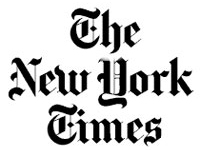
The two-story project gallery tacked onto the back of the Aldrich Contemporary Art Museum is an awkward space. The walls are higher than they are wide, making even sizable paintings look a bit like postage stamps. Meanwhile, most sculpture just disappears. But finally the museum’s curators have found
an artwork that seems perfectly at home there.
Sprouting from the center of the gallery is a 14-foot-high, approximately 650-pound object titled “Aggregation 08- AU022” (2008) by Kwang-Young Chun, a 64-year-old Korean artist who is well known in New York art circles. It is made from small triangular bricks of folded and tied mulberry paper wrapped around Styrofoam triangles and other geometric shapes glued to a wooden armature.
Part of the success of this sculpture is, I think, that it was conceived by the artist especially for the gallery here. The proportionsare perfect, being not too big or too small, but just right. It also benefits from indirect light that angles in through the side window, giving the object a creepy, otherworldly aura. And then there’s the fact that it is, well, alluringly beautiful, crafty and even a little dazzling.
So who is Mr. Chun? Writing in the exhibition catalog, Richard Klein, the museum’s exhibitions director, points out that for three decades he was known primarily as a painter. He began his first paper assemblages in 1994, creating compositions for floorand wall-mounted works combining hundreds of similar yet distinct paper parts. Since that time his works have greatly evolved in complexity and scale.
“Aggregation 08-AU022” is the artist’s largest freestanding sculpture to date and took several months to complete. A photograph in the exhibition catalog shows the artist at his studio in Korea, diligently working on the basic form of the sculpture, which even then was too big to fit inside. He worked on it outdoors, using scaffolding to reach the upper areas. The sculpture is installed in the center of the gallery without any sort of protective barrier, giving visitors a chance to get up close to it and walk around it. From a distance, your first impression is of an organic form, like a toadstool or a lichen-covered tree stump. But on closer inspection, the jumble of geometric shapes, irregular but flatter surface texture and the subtle, shifting tones of the mulberry paper bring to mind something very different: a dense metropolis.
Rough and textured, like bark, mulberry paper was widely used across Korea and China for wrapping, packaging and writing on until the 1960s. Today it is expensive and little used, forcing the artist to recycle whatever stocks he can get his hands on. He likes to scour secondhand bookshops in Korea for old books and periodicals, which he pulls apart for the mulberry pages.
The catalog tells of the artist’s childhood memories of seeing medicinal herbs being carefully wrapped using mulberry paper and tied in small packages. This memory became a formative influence on him, sparking a decision to shift from two-dimensional painting to three-dimensional sculptured paper assemblage.
He prefers paper inscribed with Korean characters. This gestures partly toward the way in which his works are embedded in Korean history and cultural traditions, but also helps create variation in design and surface texture. The subtle tones of the paper are also sometimes augmented with tea and dyes.
But what of the meaning of this intriguing object? There is no single answer, but I think the work finds strength in a tension between nature and culture — meaning that it can take viewers a while to determine whether or not the object is organic or synthetic, animate or inanimate.
Mr. Klein compares the sculpture to a monument succumbing to the ravages of time in a lost jungle setting. In one sense he isright, for this work definitely evokes for the viewer the passage of time. It oozes decay, from the mottled surface texture to the surrounding debris pile of paper bricks.
Then there is the recycling of old mulberry paper from books and the handwritten words that seem to summon up the past. He does this not to tell a story but to bend and blend those words into a kind of archive that preserves forgotten voices. While it
may not embody a clear meaning, “Aggregation 08-AU022” makes you sense something fundamental about great art that is too often forgotten or overlooked in today’s age of instant everything: true understanding comes with its own time, and it is hard won.